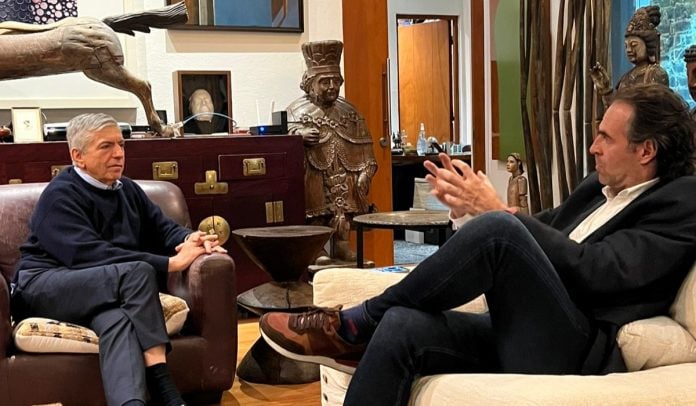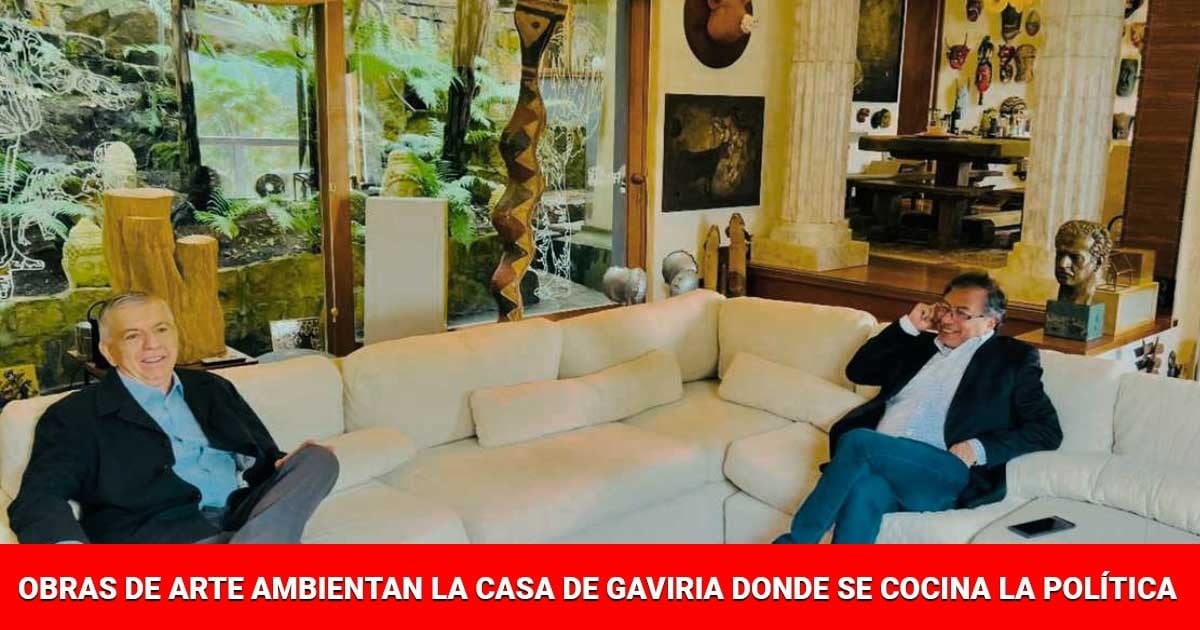His obsession with buying art skyrocketed in Washington and since then he has not stopped accumulating works that he exhibits in his homes and his Nine Eighty gallery.
–
On August 2, 1994, César Gaviria and his wife Ana Milena finished moving their most precious things. He was concluding his four years in the presidency and had managed to be elected Director of the OAS Organization of American States, a campaign orchestrated by his chancellor, Noemí Sanín.
The heaviest part of the mess were the books, the paintings that he had begun to buy, but without the passion that arose in him later, and the Chinese vases that Ana Milena Muñoz kept, along with valuable gifts received as rulers. Among the valuable objects that left the Casa de Nariño that day was a necklace with a diamond brooch in the center that Queen Sofía of Spain had given to the Colombian first lady. In addition to 500 VHS and carefully selected photos, Gaviria took care, above all, of his paintings.
From the walls of the Palace of Nariño he would have liked to take Fernando Botero’s Mother Superior, Andrés Santamaría’s painting of the Angostura Congress, or the room intervened by Antonio Barrera, but no, he couldn’t do it. Since then he thought about putting together his own collection, a task that he has undertaken since he landed in Washington, with the freedom of being a diplomatic official, but without the ties of the Colombian public sector.
From that time to now, 28 years, the collection has mutated. Back in Bogotá, in 2007 the former president had the pleasure of opening Nine Eighty, in the Quinta Camacho neighborhood in Bogotá, made up of three exhibition spaces, a video room, a garden for outdoor projects and a documentation center to find out about continental art. Gaviria had an ambition that he fulfilled with this gallery, to be a great bearer of Latin American art. The then very young collector Carlos Hurtado accompanied him on the adventure.
Gaviria and the director of the Nueve Ochenta gallery, Carlos Hurtado
–
Hurtado would be the director of a space that started promoting the career of young artists. At that time, the chosen ones were Barbarita Cardozo, Jaime Tarazona, Miler Lagos, Natalia Castañeda, Nicolás Consuegra, María Isabel Rueda, Luis Hernández Mellizo and Saúl Sánchez. Today Gaviria is more attached to photography and new artists such as the Peruvian, born in Cuzco, Ismael Randall Weks, the Bogotan Gustavo Niño, and the Venezuelan Alexander Apóstol.
Born in Pereira to a family with a small coffee land, his taste for art grew over time. When she finished economics at the Universidad de Los Andes, in the furious 70s, at the point of listening to the lectures that Marta Traba, high priestess of Colombian art, gave there, she deepened her interest that took shape as a former president and hand in hand , already in Washington by art critic and curator Ana María Escallón, who was key in the first purchases at the New York and Washington auctions.
His daughter María Paz inherited his taste and decided to study art history in New York. However, she has preferred to work in the Bogotá Chamber of Commerce promoting ArtBo and not in her father’s gallery or as a curator of her collection. However, they maintain a dialogue in terms of art and it is a point of contact in her travels, especially when they meet in New York. For both, the interest is in contemporary art in all its expressions and very focused on Latin American art.
First it was Antonio Caro, a pioneer of conceptual art on the continent, a privileged disciple of Marta Traba who turned the Coca-Cola logo into a symbol of oppression, then its rooms began to fill with the paintings of Verónica Matamala, a Chilean painter, a fierce opponent of the dictatorship of Augusto Pinochet, and everything that sounds avant-garde. Her house on Via La Calera where she attends private political meetings looks like a museum where there is no room for one more painting on the walls or vertical sculptures on the floor or small objects on the tables.

The liberal leader in a meeting with Federico Gutiérrez (Fico), at the beginning of the 2022 presidential campaign
–
The same thing happens in his office on Carrera 7th with Calle 67 where he organized a duplex so that the works of art on the walls from the ceiling to the floor would fit. His tastes continue to change and he is now more interested in photography.
Photographers as valued as Ruven Afanador, the Santanderean who has portrayed the most important figures in politics and world entertainment, as well as old glories of photography, such as Leo Matiz, are part of a treasure that even his staunchest enemies politicians, dazzle
–

